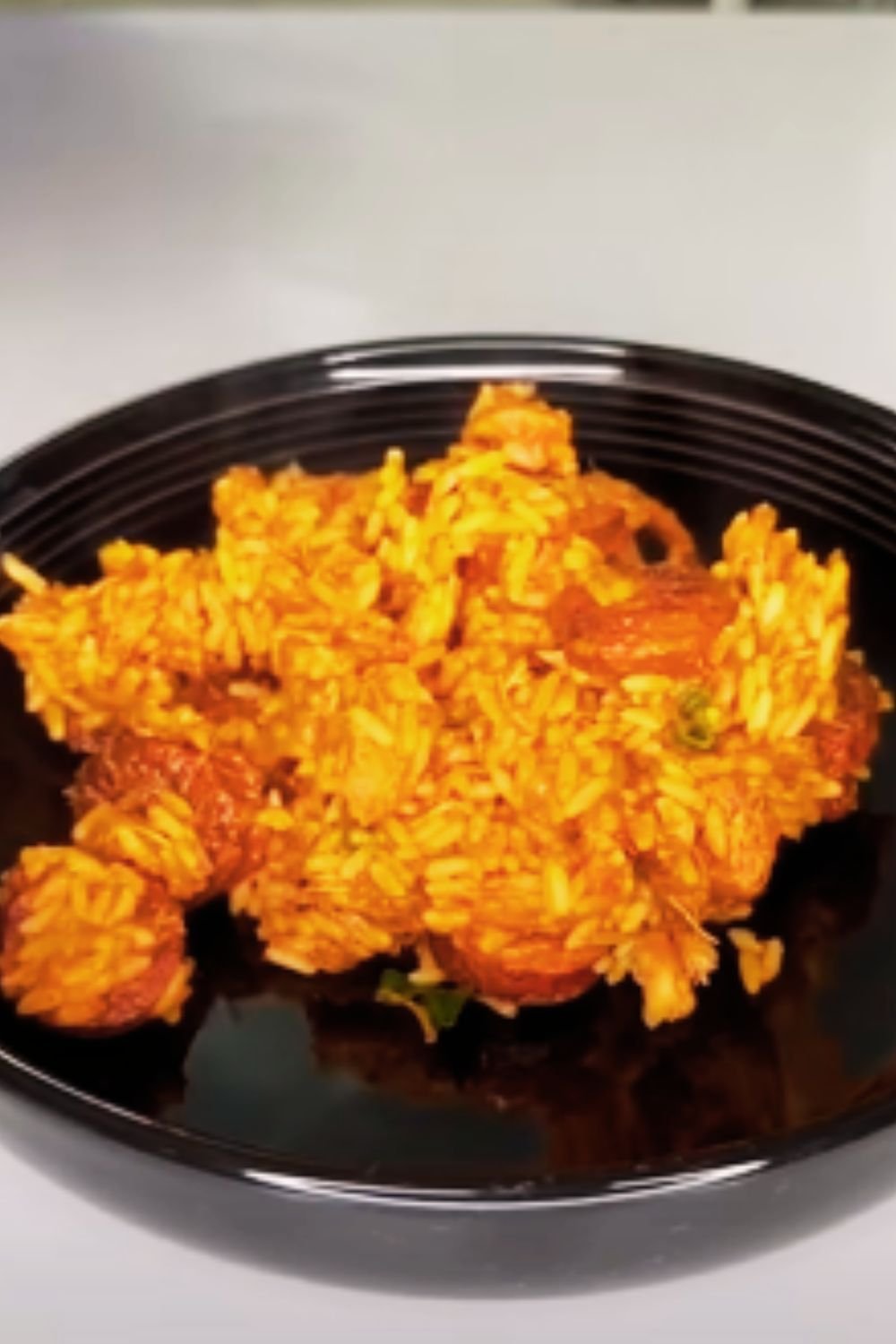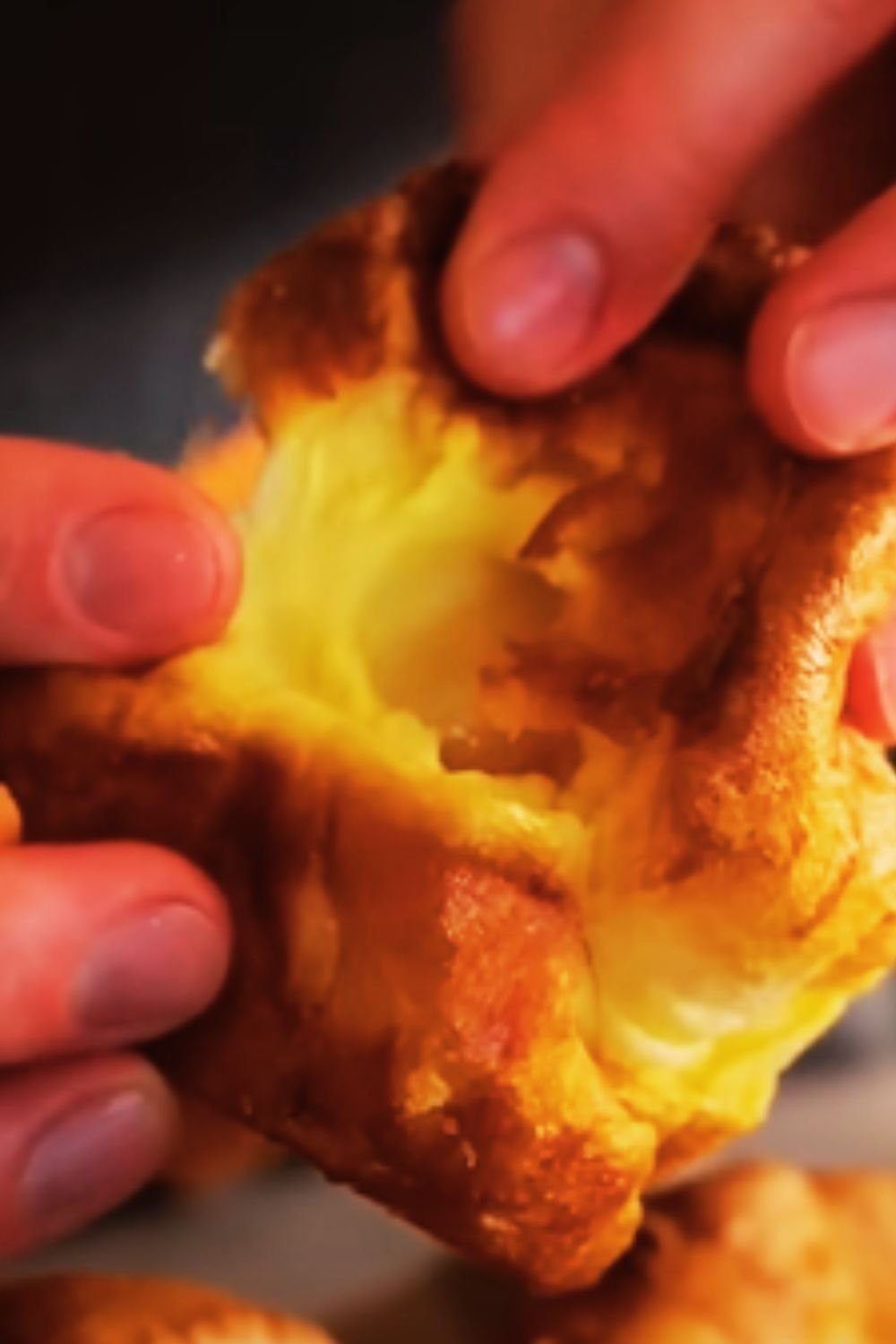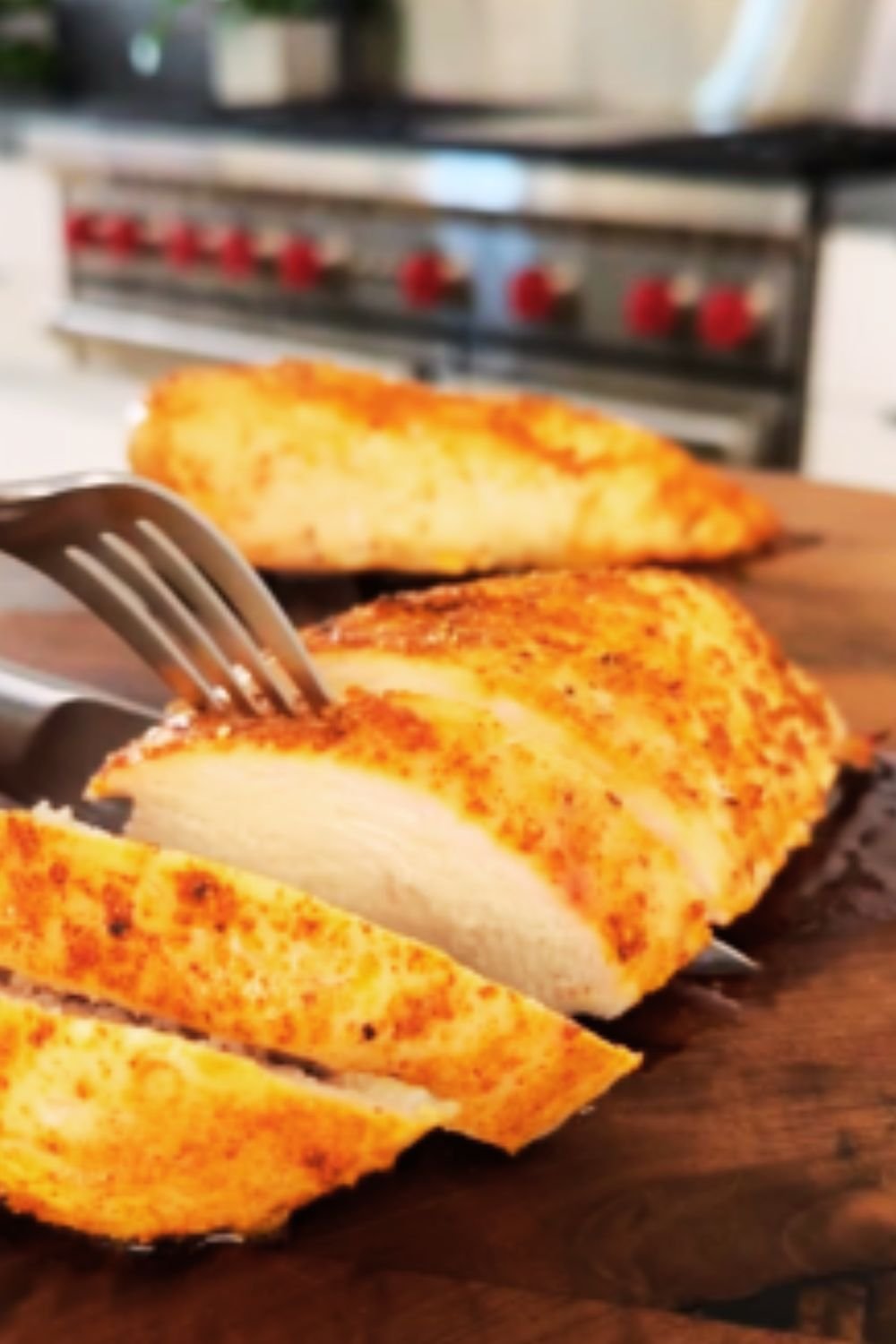There’s something magical about Creole jambalaya that transports me straight to the vibrant streets of New Orleans with just one bite. This iconic Louisiana dish combines Spanish, French, and African influences to create a hearty, spice-infused rice dish that’s perfect for feeding a crowd or meal prepping for the week. Today, I’m sharing my tried-and-true recipe for authentic Creole jambalaya that will bring those Big Easy flavors right into your kitchen.
What Makes Jambalaya “Creole”?
Before we dive into the recipe, let’s talk about what makes this jambalaya distinctly “Creole” rather than “Cajun.” The two styles are often confused, but there are important differences:
Creole jambalaya (also called “red jambalaya”):
- Originated in New Orleans
- Contains tomatoes, giving it a reddish hue
- Often includes seafood along with meat
- Generally has a slightly lighter, brighter flavor profile
Cajun jambalaya:
- Comes from rural Louisiana
- Contains no tomatoes, resulting in a brownish color
- Typically made with smoked meats
- Usually has a deeper, earthier flavor profile
I personally love both styles, but there’s something about the vibrant flavors and colors of Creole jambalaya that keeps me coming back to it time and again.
The Trinity of Creole Cooking
At the heart of jambalaya (and many Creole dishes) is what locals call “the trinity” – a flavor base of onions, celery, and bell peppers. This aromatic combination forms the foundation of the dish, similar to the French mirepoix or Spanish sofrito. When these three vegetables are sautéed together in butter or oil, they release an irresistible fragrance that signals the start of something delicious.
Ingredients You’ll Need
For the Base:
- 1 pound andouille sausage, sliced into rounds
- 1 pound boneless, skinless chicken thighs, cut into 1-inch pieces
- 1/2 pound shrimp, peeled and deveined
- 3 tablespoons vegetable oil or bacon fat
- 1 large onion, diced
- 2 celery stalks, diced
- 1 large green bell pepper, diced
- 4 cloves garlic, minced
- 1 can (14.5 oz) diced tomatoes
- 2 cups chicken broth
- 1 cup seafood stock (or additional chicken broth)
- 1 1/2 cups long-grain white rice
- 2 bay leaves
For the Seasoning:
- 2 teaspoons Creole seasoning (homemade or store-bought)
- 1 teaspoon dried thyme
- 1 teaspoon dried oregano
- 1/2 teaspoon smoked paprika
- 1/4 teaspoon cayenne pepper (adjust to taste)
- 1/4 teaspoon black pepper
- 1/2 teaspoon salt (adjust to taste)
For Garnish:
- 4 green onions, sliced
- 1/4 cup fresh parsley, chopped
- Hot sauce (Crystal or Tabasco are authentic choices)
Homemade Creole Seasoning
While store-bought Creole seasoning works perfectly fine, I love making my own blend. It’s fresher and allows me to control the heat level. Here’s my go-to recipe:
| Ingredient | Amount |
|---|---|
| Paprika | 2 tablespoons |
| Garlic powder | 1 tablespoon |
| Onion powder | 1 tablespoon |
| Dried oregano | 1 tablespoon |
| Dried basil | 1 tablespoon |
| Dried thyme | 1 teaspoon |
| Black pepper | 1 teaspoon |
| White pepper | 1 teaspoon |
| Cayenne pepper | 1/2 to 1 teaspoon (depending on heat preference) |
| Salt | 1 tablespoon |
Simply mix all these spices together and store in an airtight container. This makes enough for several batches of jambalaya and other Creole dishes.
Equipment Needed
For perfect jambalaya, I recommend:
- A large, heavy-bottomed Dutch oven or deep skillet with a lid
- A sharp knife for prep work
- Wooden spoon for stirring
- Measuring cups and spoons
- Cutting board
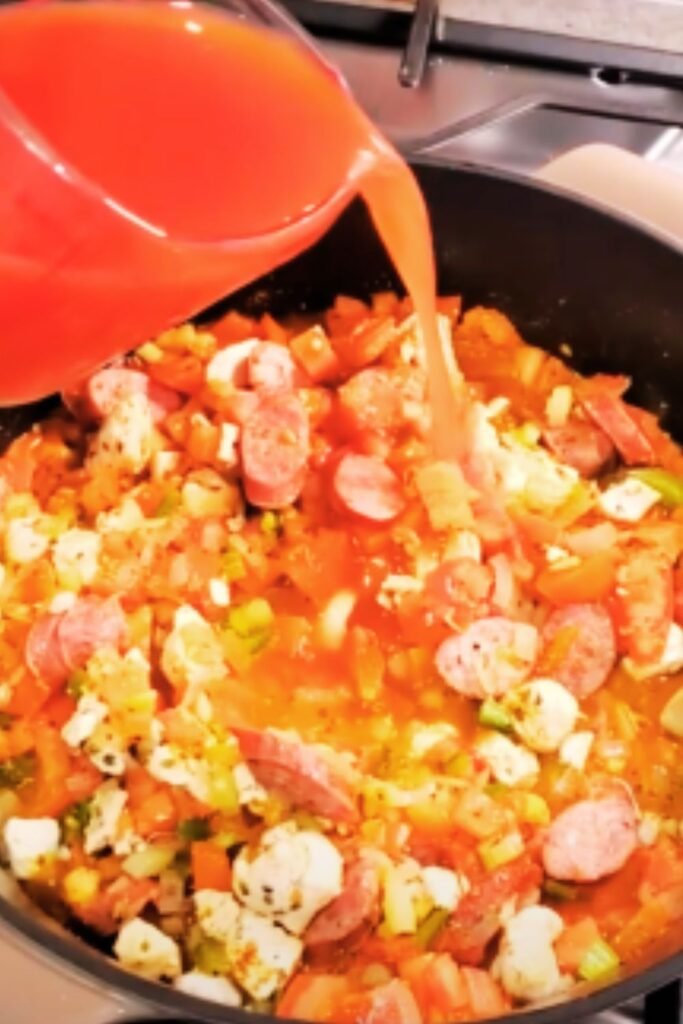
Step-by-Step Cooking Instructions
Step 1: Brown the Meats
- Heat 1 tablespoon of oil in your Dutch oven over medium-high heat.
- Add the sliced andouille sausage and cook until browned on both sides, about 5 minutes. Transfer to a plate.
- Season the chicken pieces with a sprinkle of the Creole seasoning.
- Add another tablespoon of oil if needed, then add the chicken to the pot. Cook until browned on all sides, about 5-6 minutes (it doesn’t need to be fully cooked through). Transfer to the plate with the sausage.
Step 2: Sauté the Trinity
- Add the remaining tablespoon of oil to the pot.
- Add the diced onion, celery, and bell pepper. Cook until softened, about 5-7 minutes, scraping up any browned bits from the bottom of the pot.
- Add the minced garlic and cook for another 30 seconds until fragrant.
Step 3: Build the Base
- Stir in the canned diced tomatoes with their juice.
- Add all the dried herbs and spices (Creole seasoning, thyme, oregano, smoked paprika, cayenne, black pepper, and salt). Stir to coat the vegetables.
- Return the sausage and chicken to the pot, along with any accumulated juices.
- Add the bay leaves.
Step 4: Add Rice and Liquid
- Pour in the chicken broth and seafood stock, stirring to combine.
- Bring the mixture to a boil.
- Stir in the rice, making sure it’s fully submerged in the liquid.
- Reduce heat to low, cover, and simmer for about 20 minutes, or until the rice is nearly tender and most of the liquid has been absorbed.
Step 5: Add the Shrimp
- Gently stir in the shrimp, pushing them slightly into the rice mixture.
- Cover and cook for an additional 5 minutes until the shrimp are pink and cooked through.
- Remove from heat and let stand, covered, for 10 minutes to allow the flavors to meld and the rice to finish cooking in the residual heat.
Step 6: Finish and Serve
- Remove the bay leaves.
- Fluff the jambalaya gently with a fork.
- Taste and adjust seasoning if necessary.
- Garnish with sliced green onions and chopped parsley.
- Serve hot, with hot sauce on the side for those who want extra heat.
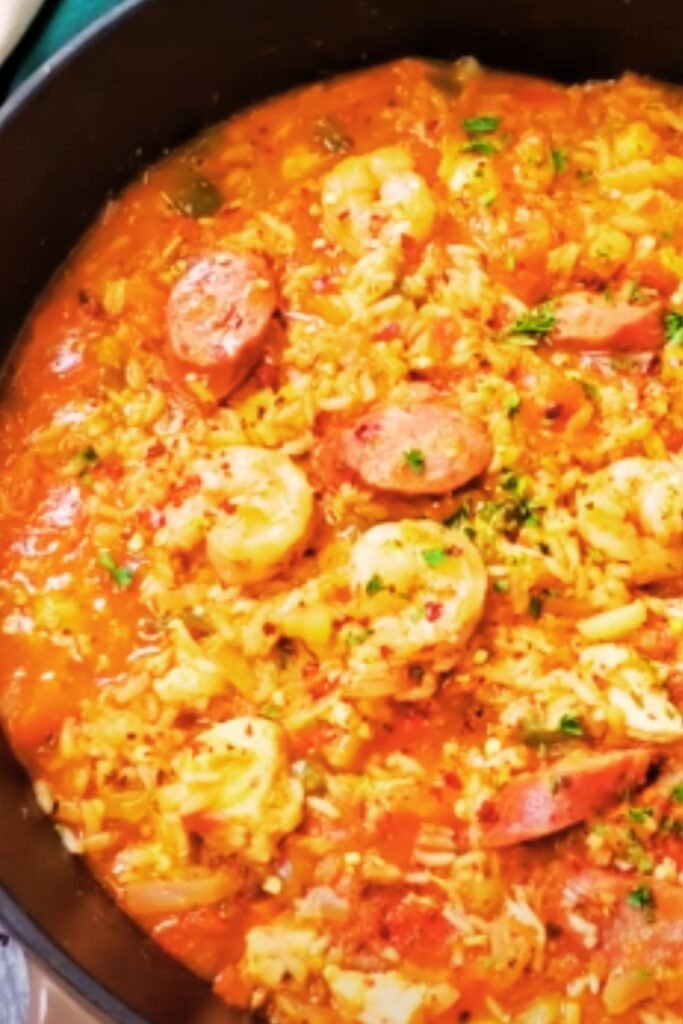
Tips for Perfect Jambalaya Every Time
- Don’t rush the browning: Taking the time to properly brown the sausage and chicken creates a depth of flavor that’s worth the extra few minutes.
- Watch your rice-to-liquid ratio: The standard ratio is 1 cup rice to 2 cups liquid, but you might need to adjust slightly depending on your rice variety. Converted rice (like Uncle Ben’s) needs less liquid than regular long-grain rice.
- No peeking! Once you’ve covered the pot to let the rice cook, resist the urge to remove the lid and stir. This lets steam escape and can result in unevenly cooked rice.
- Cook by feel, not just time: Every stove is different. Your jambalaya is done when the rice is tender and most (but not all) of the liquid is absorbed. There should still be a slight sauciness to the dish.
- Rest before serving: That 10-minute rest period after cooking is crucial. It allows the flavors to meld and the rice to fully absorb any remaining liquid.
Common Jambalaya Variations
What I love about jambalaya is how versatile it is. Here are some common variations you might want to try:
Protein Substitutions
| Original | Substitution Options |
|---|---|
| Andouille sausage | Smoked sausage, chorizo, kielbasa |
| Chicken thighs | Chicken breast, duck, turkey |
| Shrimp | Crawfish, crab, oysters, or omit for a meat-only version |
Vegetable Additions
Many cooks like to add:
- Okra (adds great thickening properties)
- Diced tomatoes (additional to what’s already in the recipe)
- Corn kernels
- Fire-roasted red peppers
Grain Variations
While traditional jambalaya uses white long-grain rice, you can experiment with:
- Brown rice (will need more liquid and longer cooking time)
- Parboiled rice (for more distinct grains)
- Wild rice blend (for a nuttier flavor and interesting texture)
Serving Suggestions
Jambalaya is a complete meal in itself, but I like to serve it with:
- A simple green salad with vinaigrette
- Crusty French bread for sopping up the flavorful sauce
- Pickled vegetables for a tangy contrast
- Sweet tea or lemonade
- Coffee with chicory for an authentic New Orleans touch
For special occasions, I might start the meal with a cup of gumbo or a simple shrimp remoulade salad.
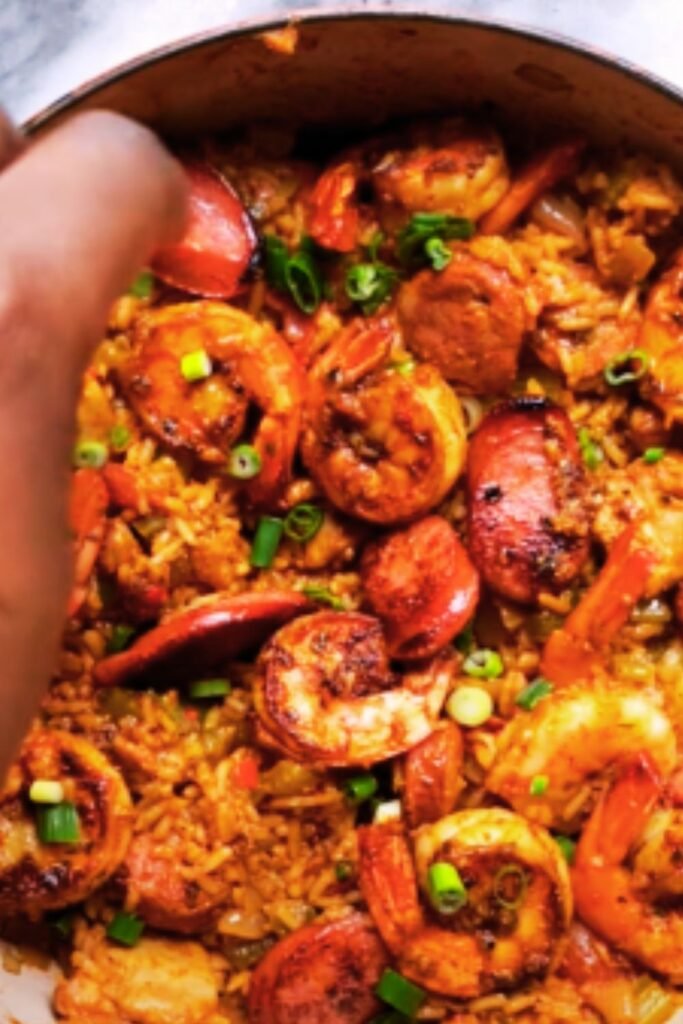
Storing and Reheating
One of the best things about jambalaya is that it tastes even better the next day! Here’s how to properly store and reheat your leftovers:
Storage
- Let the jambalaya cool completely before refrigerating.
- Store in an airtight container in the refrigerator for up to 3-4 days.
- For longer storage, freeze in airtight containers or heavy-duty freezer bags for up to 3 months.
Reheating
- Stovetop: Add a splash of chicken broth or water, cover, and heat on low, stirring occasionally until heated through.
- Microwave: Place a portion in a microwave-safe bowl with a tablespoon of water or broth, cover with a damp paper towel, and heat in 1-minute intervals, stirring between each.
- Oven: Place in an oven-safe dish, add a few tablespoons of liquid, cover with foil, and heat at 325°F until warmed through (about 20 minutes).
The Historical Roots of Jambalaya
Jambalaya has a fascinating history that reflects Louisiana’s multicultural heritage. The dish likely originated in the late 18th century when Spanish settlers in New Orleans tried to make paella but lacked saffron. They substituted tomatoes for color, creating what would become Creole jambalaya.
The name “jambalaya” itself may come from the Provençal word “jambalaia,” meaning mishmash or mix-up, or from the Spanish “jamón” (ham) plus “paella.” Others suggest it has West African origins. Whatever its etymological roots, jambalaya represents the beautiful cultural blending that defines Louisiana cuisine.
Throughout the 19th and 20th centuries, jambalaya evolved as different communities added their own touches. The Cajun version developed in the bayous and rural areas, while the tomato-based Creole style remained popular in New Orleans.
Today, jambalaya is celebrated at festivals throughout Louisiana, including the World Championship Jambalaya Cooking Contest held annually in Gonzales, Louisiana, which proudly calls itself the “Jambalaya Capital of the World.”
Nutritional Information
For those watching their nutrition, here’s an approximate breakdown per serving (assumes 8 servings total):
| Nutrient | Amount |
|---|---|
| Calories | 425 |
| Protein | 28g |
| Carbohydrates | 35g |
| Fat | 18g |
| Fiber | 2g |
| Sodium | 890mg |
This can vary based on specific ingredients and portions.
Q&A Section: Common Jambalaya Questions
What’s the difference between jambalaya, gumbo, and étouffée? While all three are beloved Louisiana dishes, they’re quite different. Jambalaya is a rice dish where all ingredients cook together. Gumbo is a thickened stew served over separately cooked rice. Étouffée is a thicker, creamier dish made with a roux and usually featuring one main protein (often crawfish), also served over separately cooked rice.
Can I make jambalaya in advance for a party? Absolutely! In fact, many people believe jambalaya tastes better the next day as the flavors have time to meld. Make it a day ahead, refrigerate, and reheat gently before serving. You might need to add a splash of broth when reheating.
My jambalaya turned out mushy. What went wrong? The most common causes are using too much liquid, stirring too frequently (breaking down the rice), or cooking for too long. Remember the 2:1 liquid to rice ratio, avoid unnecessary stirring once the rice is added, and follow the cooking times closely.
Can I make jambalaya in a slow cooker or Instant Pot? Yes! For slow cookers, brown the meats and sauté the vegetables first, then transfer to the slow cooker with the remaining ingredients and cook on low for 3-4 hours. For Instant Pot, use the sauté function for the meat and vegetables, add remaining ingredients, and cook at high pressure for 8 minutes with a 10-minute natural release.
Is jambalaya supposed to be soupy or dry? Authentic jambalaya should be moist but not soupy. The rice should be distinct and tender, not swimming in liquid but also not completely dry. Think of it as having a similar consistency to a slightly saucy risotto.
How spicy should jambalaya be? The heat level is entirely up to personal preference! Traditional New Orleans jambalaya has a kick but isn’t overwhelmingly hot. You can adjust the cayenne pepper and hot sauce to make it as mild or fiery as you like.
Can I make a vegetarian version of jambalaya? Definitely! Substitute the meats and seafood with hearty vegetables like mushrooms, bell peppers, and zucchini. Use vegetable broth instead of chicken and seafood stock. Many vegetarians also add red beans or black-eyed peas for protein.
Final Thoughts
Making authentic Creole jambalaya at home might seem intimidating at first, but once you’ve tried it, you’ll see it’s actually quite straightforward. The key is taking your time with the initial steps – properly browning the meats and sautéing the trinity – to build that foundation of flavor that makes jambalaya so irresistible.
What I love most about this dish is how it brings people together. There’s something about a big pot of jambalaya that encourages sharing, storytelling, and creating memories around the table. It’s comfort food with character – hearty and satisfying while also exciting and full of vibrant flavors.
So gather your ingredients, turn up some New Orleans jazz, and let the good times roll as you bring a taste of Louisiana into your home. Your kitchen will be filled with the most amazing aromas, and your family or guests will be impressed with this showstopper of a meal.
I hope you enjoy this recipe as much as I do. Laissez les bons temps rouler!
